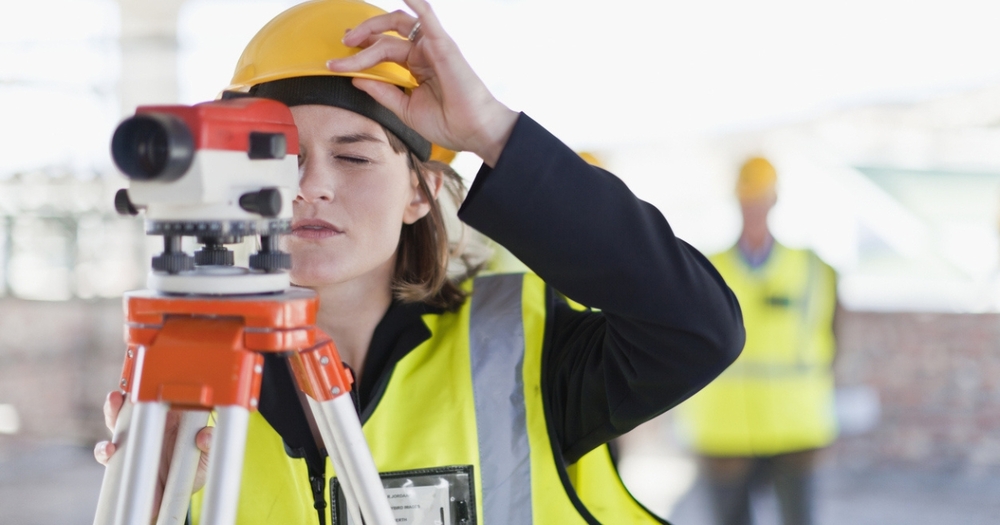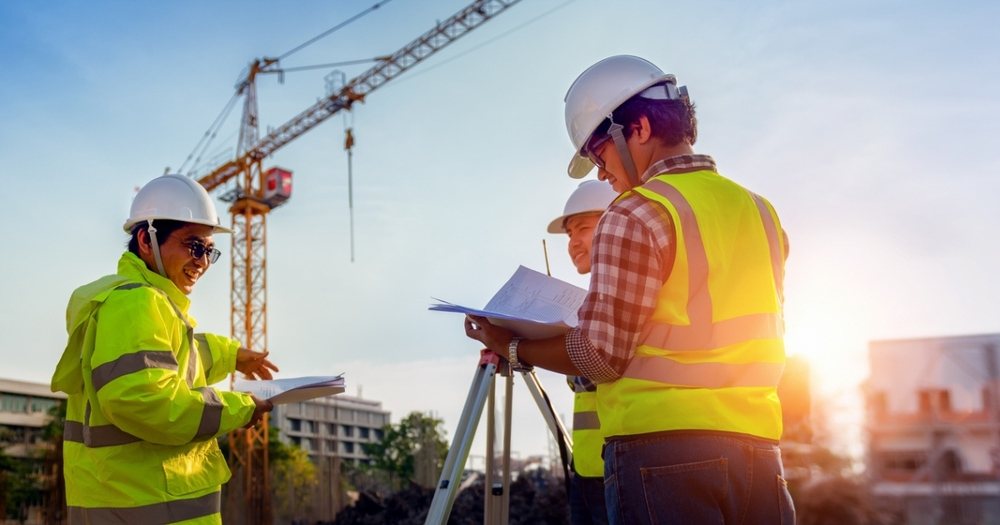
In the field of land surveying, precision is paramount. The tools you use play a significant role in ensuring the accuracy of your work. Whether you're using theodolites, GPS systems, or laser scanners, these high-performance tools are often the backbone of your operations. Thus, maintaining their optimal condition isn't merely a recommendation, it's a necessity.
However, land surveying equipment can be subjected to wear and tear, especially considering the harsh field conditions they are often exposed to. If neglected, this can lead to performance issues and costly replacements. But what if there were effective strategies to prolong the lifespan of your surveying equipment, minimizing these potential problems?
The Cost of Neglect
Consider this: advanced surveying equipment like total stations or 3D laser scanners come with a hefty price tag. While regular maintenance might seem bothersome or even unnecessary at times, it costs only a fraction of the price you would have to pay for new equipment or major repairs due to neglect.
Moreover, there's more than just the direct financial hit. When your equipment breaks down, it halts operations. The downtime as you wait for replacements or repairs means lost time and productivity, which further translates into lost income. In a profession with tight deadlines, such delays could harm your reputation and result in lost opportunities or penalties.
In the long run, these maintenance efforts not only save you significant expenses but also guarantee the optimal performance of your equipment, ensuring the quality and efficiency of your work. You can create a more streamlined, cost-effective, and efficient work operation by shifting the focus from reactive repairs to proactive maintenance.
Regular Maintenance and Care
Maintaining the robustness and precision of your land surveying equipment is not a one-time event but a continuous process. Every type of equipment will have its unique set of maintenance needs. However, some general principles apply across the board. These include regular cleaning, checking for wear and tear, ensuring secure assembly of parts, and maintaining software updates.
- Theodolites: Clean the telescope lens with a lint-free cloth and lens cleaner to avoid dust and dirt accumulation. Verify the calibration frequently, and service annually or after any severe shock or drop.
- GPS Receivers: Disassemble after each use, wipe clean, and store in a hard case. Check batteries regularly and maintain them to the manufacturer's specifications. Keep the antenna clean and free of dust. Ensure the software is up-to-date for optimum functionality, and service yearly or as recommended by the manufacturer.
- Laser Scanners: Clean the scanner window regularly to prevent dust buildup. Calibrate annually, and have your scanner serviced regularly by an authorized dealer.
- Levels: Calibrate your level monthly or quarterly to ensure accuracy. Check bubble vials for any signs of leakage or air bubble expansion. Replace as necessary. Wipe clean after each use making sure that any moisture has dried and store in a hard case with a silica packet.
- Drones for Surveying: Keep the drone clean and dry, focusing especially on sensors, camera lenses, and propellers. Ensure the drone's firmware is updated regularly to benefit from improved functionalities or bug fixes. Regularly check the drone's battery health to prevent sudden power loss during operation.
- Data Collectors / Rugged Tablets: Regularly update the software on your data collectors to ensure compatibility with other equipment. Keep the screen clean and clear of debris. Make sure to back up any important data as part of your maintenance routine to prevent data loss. Purchase a screen protector or screen case to ensure longevity of the screen face.

While regular maintenance can be performed by the users themselves, professional servicing plays a crucial role in ensuring the longevity of the equipment. Professional servicing involves thorough checks and calibrations that go beyond routine user maintenance, addressing deeper issues that might be overlooked otherwise.
Best Practices for Using Land Surveying Equipment
From harsh weather conditions to demanding terrains, your tools can easily succumb to wear and tear if not handled correctly. Here are a few tips for handling and usage to minimize wear and tear:
- Gentle Use: Treat your equipment with care. Avoid banging or dropping the tools, as this can cause internal damage that isn't immediately apparent.
- Weather Consideration: While some land surveying tools are built to withstand harsh weather conditions, exposure to extreme heat, cold, or moisture should be minimized whenever possible. Protect your tools with covers or shields during inclement weather.
- Proper Mounting: Ensure your equipment is securely mounted before use. Wobbly or unstable setups can lead to inaccurate readings and potential damage.
- Cleaning Techniques: Cleaning your equipment after field usage is crucial. Use a brush to remove dust and debris, and apply lens cleaners for optical components. However, avoid harsh cleaning solutions that might damage sensitive parts.
Proper Storage and Transportation
Your land surveying equipment, when not in use, is still susceptible to potential damage if not stored or transported correctly. Improper storage can lead to a variety of issues such as dust accumulation, corrosion, or even physical damage. By providing a secure and suitable storage environment, you can prevent these problems and help maintain the operational readiness of your equipment.
- Use of Protective Cases: Always use the protective cases designed for your tools during transportation. These cases are built to safeguard your equipment from shocks and vibration that could cause internal damage.
- Proper Placement: Don’t overload your vehicle with too many items that could potentially crush or knock your equipment. Ensure the equipment is securely placed and won't move excessively during the journey.
- Temperature Control: Extreme temperatures can harm your equipment. If possible, aim to keep your tools in a temperature-controlled environment, especially during long transit times.
Software Updates and Calibration

In the era of rapidly advancing technology, it's not just the physical aspects of your land surveying equipment that need attention. Software updates and calibration are critical elements in maintaining your equipment's functionality and prolonging its lifespan.
Software updates often contain bug fixes, improved features, and added functionalities that can enhance your equipment's performance and extend its usable life. Ignoring these updates can leave your equipment with outdated software that could lead to operational issues or even shorten the lifespan of your tools.
Calibration is the process of verifying and adjusting the accuracy of your equipment. Over time, regular usage, exposure to varying field conditions, and even minor mishandling can result in misalignments or discrepancies in measurements. Regular calibration ensures that your equipment is accurate, reliable, and performing at its best, thereby reducing the risk of errors that can lead to premature wear or breakdown.
- Theodolites: Calibration should be conducted in a controlled environment using manufacturer guidelines. Software updates can often be downloaded from the manufacturer's website and installed using a USB or wireless connection.
- GPS Receivers: Regularly check for software updates from the manufacturer and install them as available. Calibration usually involves verifying the readings against known location data, with the process varying depending on the specific model.
- Laser Scanners: Software updates are often available from the manufacturer’s website and can be installed using the provided instructions. For calibration, it's usually recommended to use professional services due to the complexity of the equipment.
- Levels: Regular calibration ensures your level's bubble vials and crosshairs are accurately aligned, which is vital for precise measurements. The manufacturer's website will often provide guidance on calibration and any available software updates, if applicable.
- Drones for Surveying: Regular calibration of the drone's compass, gimbal, and IMU (Inertial Measurement Unit) is necessary for stable and accurate flights. The manufacturer's application typically guides you through these calibration processes. Firmware updates can be found and installed via the manufacturer's app or website.
- Data Collectors: Update the operating system and any software used for data collection regularly, as suggested by the manufacturer. Since data collectors usually don't require calibration, focusing on proper handling, storage, and regular software updates will keep them functioning optimally.
Proper Documentation and Record-Keeping
Just as important as the care and maintenance of your land surveying equipment is keeping a thorough record of all activities related to the equipment. Documentation and record-keeping help track the equipment's life cycle, plan preventative maintenance, identify recurring issues, and even determine when it's time for a replacement.
- Maintenance Schedules: Proper documentation allows you to keep track of maintenance schedules. Regular maintenance is key to extending the lifespan of your equipment. With records, you can ensure you’re conducting timely checks, inspections, and cleanings, and not missing any vital upkeep.
- Recurring Issues: Documenting repairs and issues can help identify patterns. If you notice a piece of equipment constantly needing repairs or having the same problem, it could be a sign of a bigger underlying issue. Early detection and resolution of these problems can save your equipment from permanent damage.
- Planning Replacements: Knowing the repair and maintenance history can help you estimate when it might be time to retire a piece of equipment. This information can assist in budgeting and planning for replacements, ensuring your operations are not hampered due to sudden equipment failure.
Training Your Team
No matter how robust and high-quality your surveying equipment is, its lifespan is heavily dependent on how it's used and maintained day in, day out. The actions of those handling the equipment, your team members, significantly impact the longevity of these precious tools. Therefore, it's paramount that everyone involved understands the right way to handle and care for them.

- Workshops: Organizing workshops for your team can provide them with hands-on experience under the guidance of an expert. These sessions should cover both the operational aspects and maintenance protocols of the equipment.
- Manuals: Always have equipment manuals available for the team. Encourage your team members to read and understand them. These manuals usually have a wealth of information about the equipment's operation and maintenance straight from the manufacturer.
- Ongoing Education: Technology keeps evolving, and so does land surveying equipment. Therefore, ongoing training is necessary to keep your team updated with the latest advancements and best practices.
Enhance Your Equipment’s Performance and Longevity
Prolonging the lifespan of your land surveying equipment doesn't merely serve to save costs. It plays a crucial role in ensuring the accuracy and quality of your work, maintaining operational readiness, and ultimately, the success of your projects. By integrating the recommended practices and measures—ranging from regular maintenance and care, field usage best practices, proper storage, to keeping up-to-date with software updates and calibration—into your work routine, you can significantly extend your equipment's usable life.
Maximize the lifespan of your land surveying equipment with essential maintenance and best practices. Save costs and ensure precise, efficient operations.


